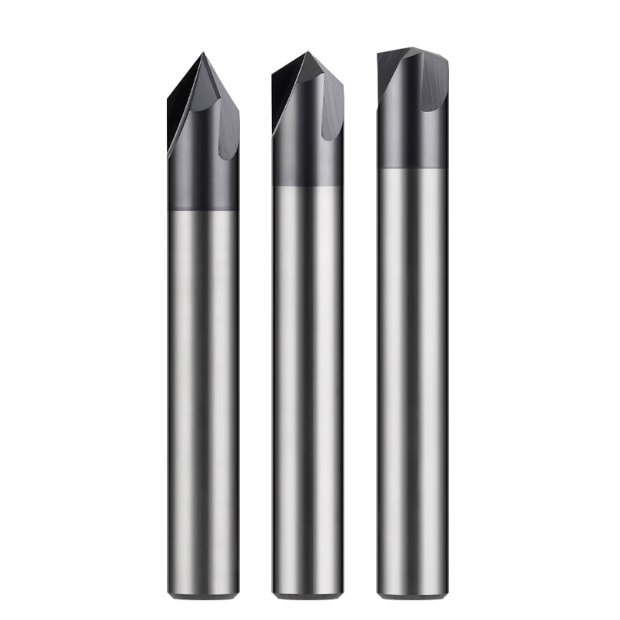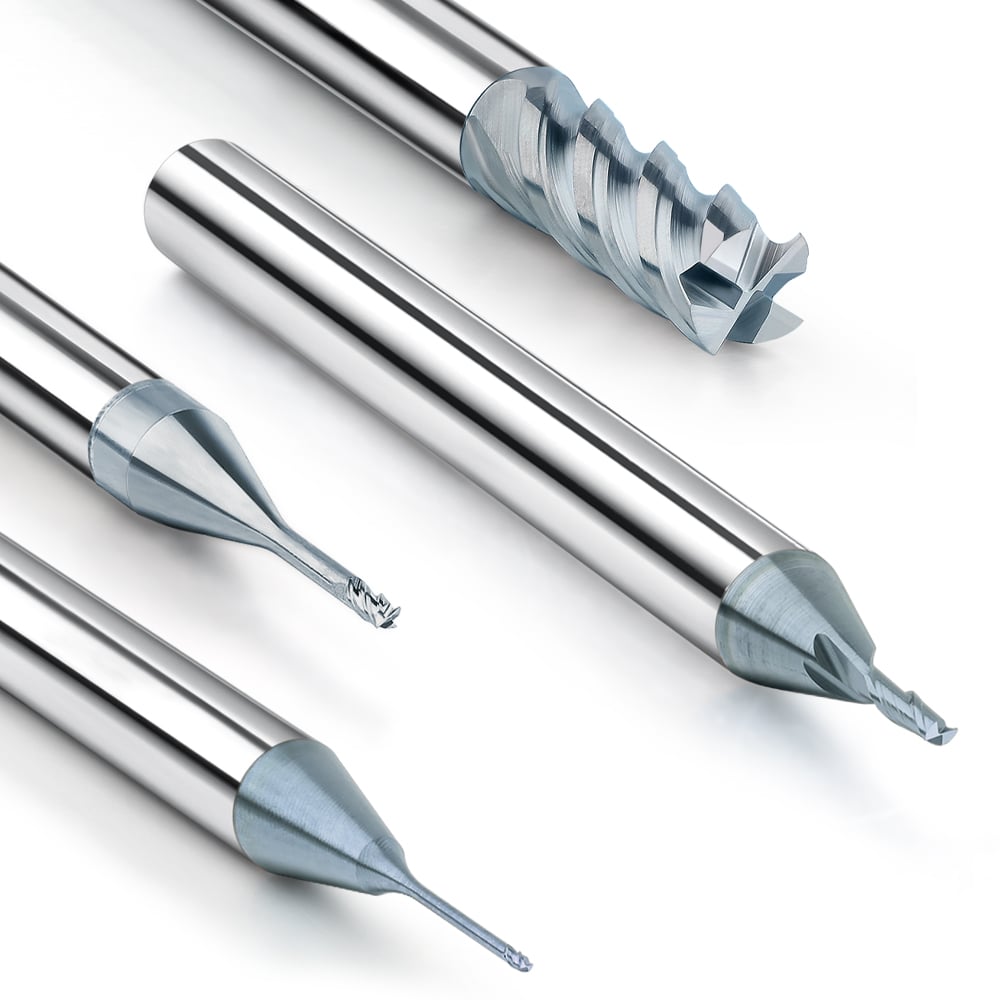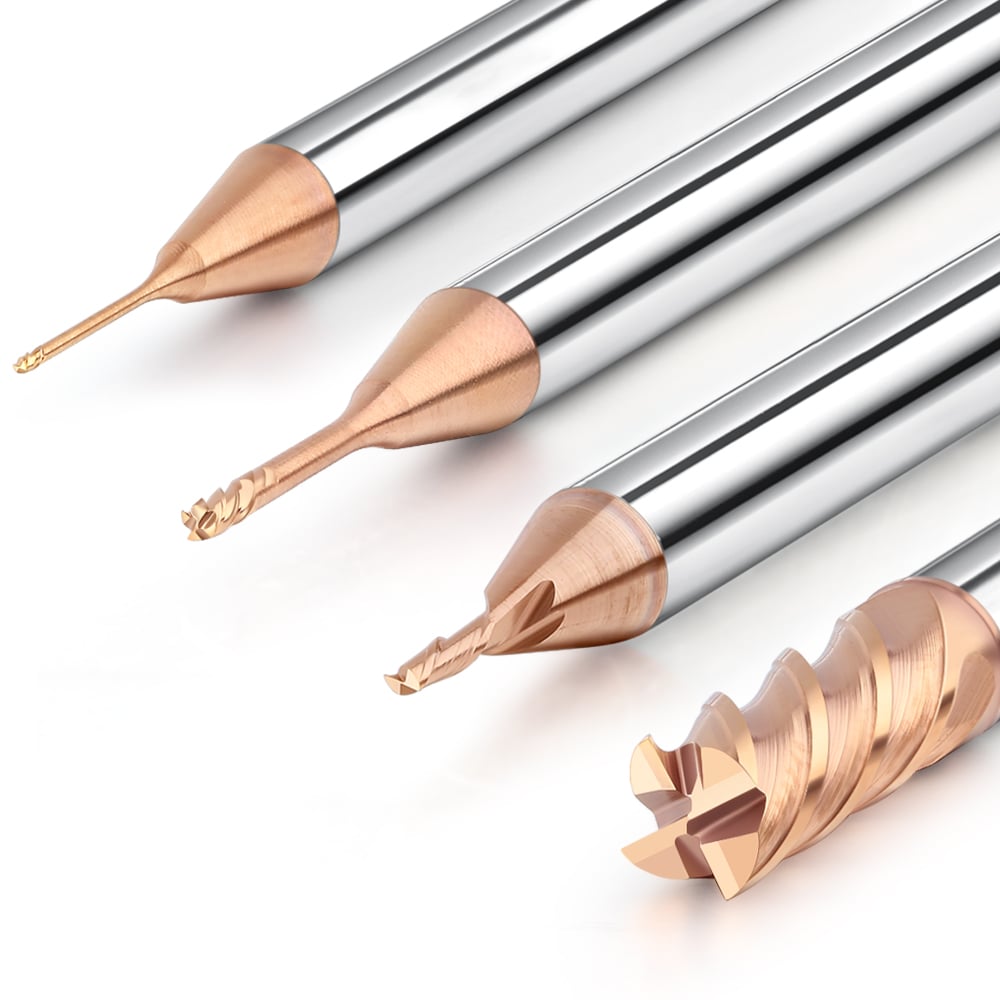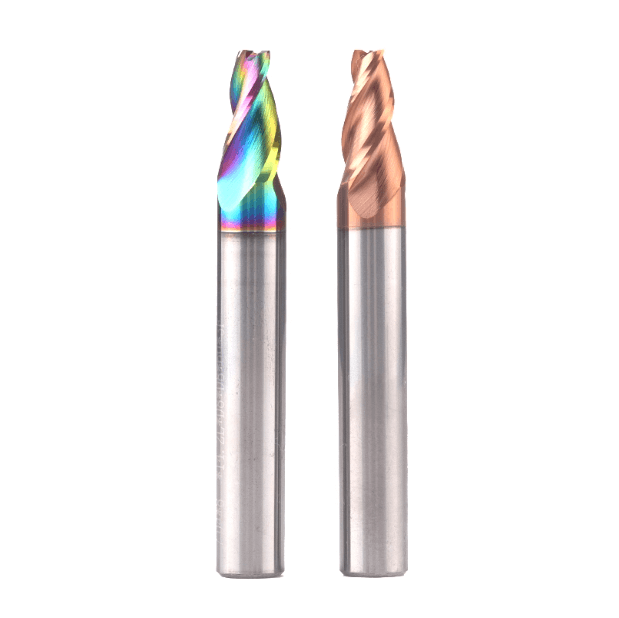In many manufacturing industries, face milling is a vital machining process. This method employs a face mill to cut away material from the surface of a workpiece, usually leaving it flat and smooth. Unlike end milling—where the cutter is placed along an object’s axis—face mills have their cutters attached perpendicularly to spindles that rotate around them. Knowing how face mills work and which tools or techniques to use can greatly improve machining operations’ quality, efficiency, and precision. Thus, this article offers an extensive overview of what face milling entails; it covers everything one needs to know about operating this basic but critical process, including some advanced tips for maximizing performance at different stages.
What is a face mill and how does it work?

In machining, a face mill is a type of cutting tool that eliminates material from the surface of a workpiece. It is made up of many inserts or cutting edges that are mounted on the circumference of a circular body. Normally, this tool is fixed onto the spindle of a milling machine such that its axis is at right angles to that of the working surface being processed. As it rotates, the revolving face mill interacts with the material thereby making both axial and radial cuts in order to produce an even and polished flat finish.
Definition of face milling
Face milling is an operation that employs a rotating cutter, referred to as a face mill, to remove stock material from the surface of a workpiece to generate flatness and smoothness. In this process, various cutting edges arranged around the periphery of the face mill are used to make axial and radial cuts. The spindle of a milling machine supports this tool; it mounts on it such that its axis is vertical relative to the workpiece.
Components of a face mill
The key elements of a face mill include:
- Tool Body: The primary form that holds together all other parts and attaches to the milling machine’s spindle.
- Inserts: Cutting edges that can be replaced, typically made from carbide, are used for cutting. Depending on the application, inserts may vary in shape, size and material.
- Insert Pockets: These are recesses in the tool body for securely holding inserts.
- Clamping Mechanism: screws or clamps that fix inserts into their pockets tightly.
- Coolant Channels: These are internal passages through which coolant flows to reduce heat produced when cutting.
- Shank or Arbor Hole: This feature connects the face mill with the spindle of the milling machine, ensuring secure mounting and alignment.
How face milling differs from other milling operations
Face milling is different from other milling operations in that the face mill’s orientation changes as well as the result of the cutting process. In most cases, the periphery and end of the milling cutter perform most of the cutting to create a flat and, at times, smooth surface finish. It contrasts end-milling, where the cutter primarily engages with the end of a tool for making accurate features like slots, grooves, or contours on workpieces.
Peripheral milling removes material from surfaces through the edges of cutters, thus getting a surface that is parallel to the axes of those tools. On the contrary, face-milling machines concentrate on working with faces (sides) but not edges so that they can handle large, flat surfaces more effectively than any other type. Moreover, multi-tooth cutters are often used during this operation because they have replaceable inserts that enable them to work at higher feed rates, thereby giving longer life spans than single edge found in some applications done by end mills, therefore making it applicable for high-speed cutting or mass production environments.
How to choose the right face mill for your application?

To choose the right face mill for your application, you need to consider a few important things:
- Material of the workpiece: To ensure that the cutting inserts of a face mill are appropriate for use, one should consider the hardness and machinability of the materials one plan to work with.
- Required Surface Finish: The quality required for finishing surfaces will help in selecting cutter geometries and grades used on inserts.
- Power & Stability of Machine: Determine if it’s strong enough or rigid enough so that selected cutters can be supported by this milling machine, along with its horsepower rating being sufficient.
- Speeds & Feeds: Choose a face mill that will operate best at desired feed rates and cutting speeds.
- Geometry and Material of Inserts Used: Insert designs must be chosen where tool life is balanced against cutting performance, considering different applications that may arise during milling operations.
- Cost Effectiveness: Will it save money? Consider the initial cost vs. the time saved in machining with more extended living tools.
In summary, the most important factors when choosing an appropriate face mill are aligning milling needs with workpiece material type(s), required finish(es), machine capability(ies), cutting parameter(s) specification(s), and overall cost-effectiveness.
Factors to consider when selecting a face mill
According to some of the best practices in industrial engineering, several factors should be considered when choosing a face mill.
- Performance: How well can this face mill remove material quickly and with the least resistance? This factor directly determines productivity and tool life. You may want to consider mills with positive cutting geometries as well as those coated for better performance.
- Tool Stiffness and Stability: High-precision cuts require the tool to be rigid throughout its operation while remaining stable. Such characteristics enable superior surface finishes even on delicate workpieces. Face mills with high-quality features provide improved holding power and minimum vibration levels during use.
- Machine Tool Compatibility: One must ensure that they select a face mill that suits their spindle’s size (or any other relevant specifications), taking into account mounting requirements vis-à-vis machine horsepower needed to support different operational demands.
By prioritizing cutting performance over everything else, you will end up with a face mill that is efficient and precise enough to save time during milling processes.
Understanding cutting diameter and its importance
The size of the face mill’s cutting diameter is an important factor that greatly affects the machining process. This parameter sets the upper limit for how wide a cut the tool can make in one step, thereby determining milling efficiency as well as speed. In fact, bigger diameters result in wider material removal, hence reducing the number of passes required and increasing productivity. However, it is necessary to match this dimension with machine tools’ capacities, i.e., spindle power and rigidity, so that there are no problems such as excessive deflection of cutting edges or wear on the machines themselves. Choosing correctly among different options for cutting diameter will improve surface finish quality, shorten cycle time, and lengthen tool life, thus making milling more cost-effective and accurate in general terms.
What are the advantages of using an indexable face mill?

- Cost-Effective: Indexable face mills are cost-effective because only worn inserts have to be replaced instead of the whole tool, reducing the costs incurred in the long run.
- Versatility: By changing the inserts, these tools can be used for different machining operations, such as facing, contouring, and chamfering.
- Longer Life Span: Rotating the insert can produce a fresh cutting surface, thus generally prolonging its life span.
- Better Performance: Better performance is achieved through modern insert designs and coatings, which also reduce the machining time required.
- User-Friendly: Less time is wasted during the overuse of inserts, which leads to more production hours being utilized, therefore increasing productivity levels at workplaces.
Indexable face mills are, therefore, a good choice because they save money, can do many things, last long, and cut faster and easily.
Cost efficiency and tool longevity
Face mills that can be indexed are known for being cheap and long-lasting. In terms of being cheap, what sets these tools apart is that operators have the option to replace individual inserts, which are much cheaper than replacing the entire tool. It is not only an immediate cost saving but also extends the usefulness of the tool’s body.
Regarding longevity, indexable face mills can use several cutting edges by rotating inserts. This means each insert has its life extended through this turningover, thus making maximum use of the tool possible. Also, better designs for cutting parts and stronger coatings reduce attrition so that they can work harder and longer without losing efficiency or accuracy, hence increasing performance levels over prolonged periods. Therefore all these factors together lead to reduced operation expenses and improved productivity during milling operations.
Improved surface finish and precision
According to recent sources, indexable face mills are important for achieving high-quality surface finishes and accuracy. Modern insert designs with advanced geometries have been found to considerably improve the cutting process by enhancing smoothness and reducing dimension variations. Furthermore, these tools are characterized by stability, which ensures that there are no fluctuations during machining operations other than vibrations. The usability of indexable face mills also makes it possible for an engineer to choose an appropriate grade or coating on a case-by-case basis, thus improving finish quality and dimensional accuracy simultaneously in workpieces.
Flexibility in milling operations
In milling operations, indexable face mills are the most flexible tools. They can execute tasks such as face milling, shoulder milling, or contouring, which means that these machines are versatile and can fit many machining needs. This is made possible by their capability to change inserts easily with different ones without necessarily changing the whole tool. Different materials and cutting conditions can be worked on effectively by operators due to various insert geometries as well as cutting-edge configurations, which also contribute towards this adaptability. As a result setup times are reduced while productivity improves leading to them being highly valued in different types of machining environments.
How does the face milling process work?

Face milling refers to a very efficient cutting procedure that requires special geometries of tools, unchangeable tool performance and adjustable inserts to give better finishes and closer tolerances. The method is applicable in many manufacturing operations because it is versatile and can be adjusted.
Setting up the milling machine
To perform face milling correctly, it is important that one sets up the milling machine properly. Initially, one should attach the workpiece firmly so that there will be no movement as the machining continues; this can be done using clamps or a vise appropriate for work holding. Then, the spindle speed of the machine, feed rate, and depth of cut has to be configured well with respect to the material being machined, as well as the specific requirements of each job. It is necessary to ensure good installation and alignment of cutting inserts so as to achieve optimum tool performance with an extended lifespan for tools used in milling machines. Additionally, checking regularly on tool stability, coolant flow rate, and chip evacuation helps more accuracy plus efficiency during the milling process. For satisfactory outcomes during face mills applications, ensure accurate calibration of machines followed by carefulness in set up procedures since these two factors contribute greatly towards achieving uniformity in results produced by different machines under similar conditions.
Choosing the right cutting tool for the job
To get the best results, it is essential to choose the most suitable cutting tool for face milling operations. The material being worked on, the type of milling operation, and specific task requirements are among the major considerations that must be taken into account. Carbide inserts are mostly preferred because they are strong and can stay sharp even when exposed to high temperatures; hence, they are applicable in different materials like steel, cast iron, and non-ferrous metals. Ceramic inserts,, as well as CBN (Cubic Boron Nitride) inserts,, are more wear-resistant and thermally stable for high-speed machining processes. Tool geometry should also match with the material being machined as well as mill conditions so that chips can be removed easily while reducing forces used during cutting. In addition to this, a robust tool holder that is accurately aligned with the machine interface reduces vibrations, thereby enhancing accuracy in cuts made by the machine tool. These things need careful consideration from manufacturers if they want their cutting tools selected right, thus optimizing performance during machining while extending tool life at the same time.
Steps in the face milling process
The face milling process comprises a number of crucial stages for machining accuracy and quality:
- Initial Set-Up: To ensure precision, begin by calibrating the milling machine correctly. Then, use appropriate clamping techniques to securely mount the workpiece on the worktable, preventing any movement during milling.
- Tool Selection and Mounting: Choose a cutting tool that is suitable for the material being worked on and meets milling requirements. Fix it firmly and in right position on the spindle.
- Determining Cutting Parameters: Establish optimum cutting speed, feed rate as well as depth of cut with regard to the surface finish required and workpiece material. These settings should be made on adjustments miller.
- Applying Coolant: Configure cooling system so that it keeps right temperature levels necessary for lubrication which helps in chip removal besides extending tool life span.
- Performing Mill Operation: Start machining operation by rotating spindle then lowering cutter gradually into contact with work piece until required depth is reached. Maintain constant feeding speed throughout while also checking for signs of wear on tools or vibrations in machines during operations monitoring.
- Inspection of Quality: Once the face milling pass is complete, inspect the surface finish for correctness. Size measurements should be taken using precision instruments such as micrometers, etc., to ensure that the milled surfaces meet specified tolerances.
- Maintenance Of Tools: Regularly check cutting-edge conditions, replace where necessary, and keep machines clean for them to function optimally.
Adherence to this procedural approach enables operators to achieve high productivity standards during end-mill processes.
What are common problems in face milling and how can they be fixed?

- Chattering and Vibration: Augment solidness of the machine, subdue cutting speed and escalate feed rate. Utilize cutting tools that are well-balanced and sharp.
- Tool Wear: Choose the appropriate material for the cutting tool, ensure the coolant is applied correctly, and maintain optimum cutting parameters.
- Poor Surface Finish: Modify feed rate and cutting speed; ascertain sharpness of tool while using suitable coolant.
- Dimensional Inaccuracy: Adjust the machine by calibrating it, and confirm the alignment of the cutting tool by checking with precise measurement devices.
- Chip Buildup: Optimize the flow of coolant, use breakers to break chips into smaller pieces as they come out of the workpiece, and select proper cutting parameters.
Issues with surface finish and their solutions
Face milling can have many common problems that can make getting a high-quality surface finish challenging. Below are tips for fixing those problems, taken from some of the industry’s most popular online resources.
- Tool Marks and Chatter: Tool marks could be caused by tool wear, wrong cutting parameters, or machine vibrations. Solution: Ensure you use sharp and well-maintained cutters; optimize speeds, feeds, and depths of cuts; increase rigidity on machines so that they don’t vibrate unnecessarily, etc.
- Burnishing and Excessive Heat: Too much heat created while machining can result in burnishing or poor surface quality. Solution: Employ proper cooling methods, like using enough coolant or air blast for heat dissipation. Adjust the speed of the cut to reduce thermal load.
- Material Adhesion and Built-Up Edge (BUE): When material sticks onto the cutting tool, thus creating built-up edges (BUEs), it always gives bad finishes. Solution: Select coatings that will not allow the adhesion of materials to tools; go for cutters with higher lubricity; avoid conditions that may lead to the formation of BUEs by adjusting cuts accordingly, among other measures.
Machinists can achieve better results from their face milling operations by dealing with these general problems directly instead of using generic solutions that do not work as effectively toward improving surface finish quality.
Dealing with insert wear and tear
Effectively managing to insert wear and tear is important in maintaining machining efficiency and ensuring high-quality products. Here are some of the suggested techniques from various reputable online sources:
- Frequent Monitoring and Checking Up: Carry out regular check-ups on the edges of inserts for any indications of wear like cracking or distortion. Tools should be checked as often as possible so that worn-out inserts can be replaced early enough to avoid poor surface finish caused by this.
- Cutting-Parameters Optimization: Modify cutting speeds, feed rates, depth-of-cut depending on the workpiece material under consideration as well as the type of insert being employed. This keeps excessiveness in check while lengthening tool life through proper settings recommended by manufacturers during use.
- Proper Choice Of Tools: Utilize those inserts that are manufactured using good quality materials designed specifically for a given kind of machining operation. It may also be worth considering coatings with higher hardness levels alongside advanced thermal & mechanical stability properties during selection among others.
Such measures help reduce insert wear and tear greatly, thus improving their performance and extending their lifespan.
Troubleshooting excessive tool vibration
In machining, excessive vibration of tools, also called chatter, is a widespread problem that can lead to poor surface finishes and short tool lives. Below are some suggestions on how to deal with this issue based on the best available information:
- Secure the Workpiece: Make sure that it is securely clamped and supported. Often additional fixtures or damping devices can be used to stabilize the workpiece by absorbing any excess vibrations.
- Adjust Cutting Parameters: Optimize speeds and feeds until you strike a balance that minimizes vibrations. You can try decreasing the cutting speed or changing the feed rate to find more stable cutting conditions.
- Choose and Service Tools: Select sharp, high-quality tools with correct edge geometries to reduce cutting forces. Inspect tools frequently for wear and tear and service them as required; if any show signs of wear, they should be replaced immediately.
- Machine Condition: Inspect the condition of the machine tool, including spindle bearings and drive mechanisms, among others; any mechanical problems within the machine could worsen vibrations, so all parts must be well maintained and in good working condition.
Implementing these solutions will enable operators to troubleshoot excessive tool vibration effectively, resulting in smoother operations and better-quality machining outcomes.
Reference sources
Frequently Asked Questions (FAQs)
Q: What is a face mill and what does it do?
A: A face mill is a typical machining tool used to produce flat surfaces on workpieces. Many cutting edges or inserts make up the face milling cutter; they shave off material from the surface, leaving it smooth. This tool is essential in any operation that involves milling across faces.
Q: What separates a face mill from an end mill?
A: While both are used for machining, the primary function of a face mill is to create flat surfaces (face milling). Conversely, an end mill can perform many different operations, such as profiling, slotting, and contouring. In other words, one removes materials from the faces of workpieces while the other cuts along their edges and sides.
Q: What kinds of materials can be worked on with a face milling cutter?
A: Cast iron, steel, aluminum, plastic etc., are some examples of materials which can be machined using these cutters. Hardness of the material being worked on among other factors determines the choice of cutter and inserts so as to ensure effective removal with good finish.
Q: What is a shell mill and how is it different from other types of mills?
A: A shell mill refers to any kind of face milling cutter that has a hole at its center through which it fits onto an arbor, unlike end mills, which fit directly into spindles. Their strong construction makes them suitable for heavy-duty jobs involving milling across faces, especially when several inserts need to be held at once.
Q: How does a wiper insert improve surface finish during face milling?
A wiper insert has been designed with unique geometry intended to smoothen out surfaces during milling processes. It scrapes away fine peaks left behind by other inserts thereby giving better finishes; this becomes very important while finishing with wiper inserts.
Q: What should be considered when choosing a tool for face milling?
A: The workpiece material, face milling cutter type, cutting speed, feed rate, depth of cut, and specific operation (e.g., heavy-duty face milling or general face milling) are among the factors that should be considered when choosing the right tool. Efficiency and desired outcome is guaranteed by selecting an appropriate implement.
Q: Why is arbor important in face milling operations?
A: Arbor holds the face milling cutter firmly thus ensuring accuracy and stability throughout its use. The hole on a cutter fits over an arbor which is mounted onto machine spindle hence it enables precise removal of materials with ease.
Q: What is high-feed milling, and when should it be used?
A: High feed rate machining technique that utilizes shallower cuts at increased speeds known as high-feed milling. This method removes large volumes of stock fast therefore recommended for roughing applications where time saving is paramount especially in heavy-duty-face-milling processes where material removal rates are critical.
Q: How can a square shoulder be achieved during shoulder milling?
A: To make a square shoulder during shoulder milling one must utilize square shoulder indexable face mills designed to create accurate 90° corners. clean edges necessary for parts with exact square shoulders required are ensured by this tool.
Q: What does entering angle mean in relation to these types of tools?
A : Cutting forces as well surface finish quality greatly depend on entering angle adopted by any given type of end mill used for facing operations. For example, 90 degree entering angles are used mainly in producing shoulders with less radial force while others help optimize process towards achieving desired results.







